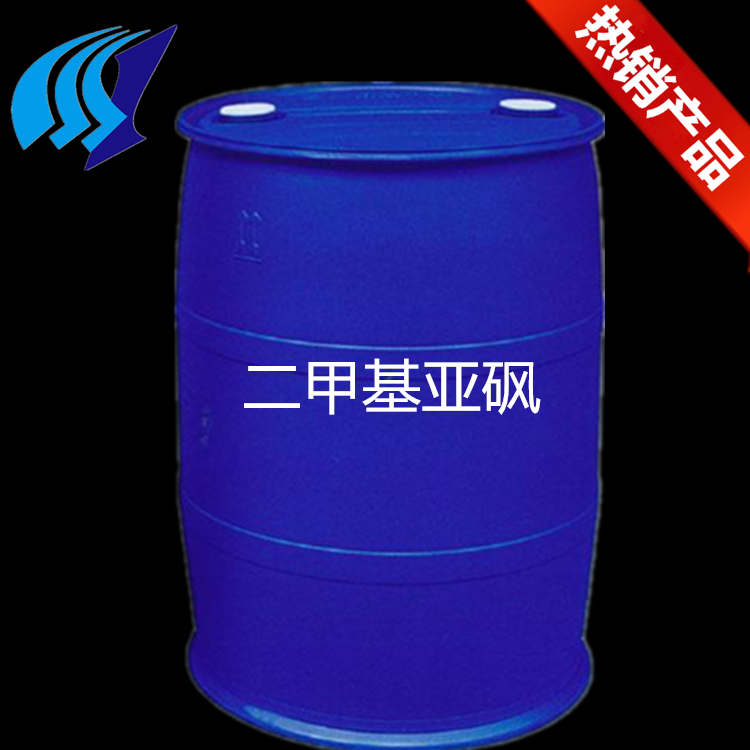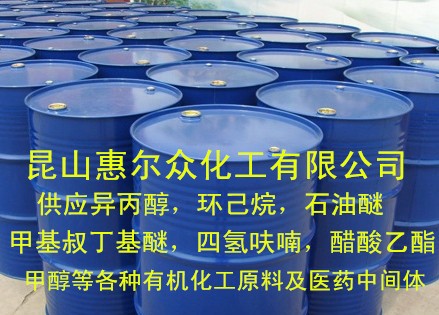| Product name | Dimethyl sulfoxide |
|---|
| Product number | - |
|---|---|
| Other names | Methane, sulfinylbis- |
| Identified uses | For industry use only. Food additives -> Flavoring Agents |
|---|---|
| Uses advised against | no data available |
| Company | MOLBASE (Shanghai) Biotechnology Co., Ltd. |
|---|---|
| Address | Floor 4 & 5, Building 12, No. 1001 North Qinzhou Road, Xuhui District, Shanghai, China |
| Telephone | +86(21)64956998 |
| Fax | +86(21)54365166 |
| Emergency phone number | +86-400-6021-666 |
|---|---|
| Service hours | Monday to Friday, 9am-5pm (Standard time zone: UTC/GMT +8 hours). |
Not classified.
2.2 GHS label elements, including precautionary statements| Pictogram(s) | No symbol. |
|---|---|
| Signal word | No signal word. |
| Hazard statement(s) | none |
| Precautionary statement(s) | |
| Prevention | none |
| Response | none |
| Storage | none |
| Disposal | none |
none
3.Composition/information on ingredients 3.1 Substances| Chemical name | Common names and synonyms | CAS number | EC number | Concentration |
|---|---|---|---|---|
| Dimethyl sulfoxide | Dimethyl sulfoxide | 67-68-5 | none | 100% |
Consult a physician. Show this safety data sheet to the doctor in attendance.
If inhaledFresh air, rest.
In case of skin contactRemove contaminated clothes. Rinse and then wash skin with water and soap. Refer for medical attention .
In case of eye contactFirst rinse with plenty of water for several minutes (remove contact lenses if easily possible), then refer for medical attention.
If swallowedDo NOT induce vomiting. Refer for medical attention .
4.2 Most important symptoms/effects, acute and delayedSlight eye irritation. (USCG, 1999)
4.3 Indication of immediate medical attention and special treatment needed, if necessaryIn case of accidental oral ingestion, specific measures should be taken to induce emesis. Additional measures which may be considered are gastric lavage, activated charcoal and forced diuresis.
5.Fire-fighting measures 5.1 Extinguishing media Suitable extinguishing mediaFor small (incipient) fires, use media such as "alcohol" foam, dry chemical, or carbon dioxide. For large fires, apply water from as far as possible. Use very large quantities (flooding) of water applied as a mist or spray; solid streams of water may be ineffective. Cool all affected containers with flooding quantities of water.
5.2 Specific hazards arising from the chemicalSpecial Hazards of Combustion Products: Sulfur dioxide, formaldehyde, and methyl mercaptan can form (USCG, 1999)
5.3 Special protective actions for fire-fightersWear self-contained breathing apparatus for firefighting if necessary.
6.Accidental release measures 6.1 Personal precautions, protective equipment and emergency proceduresUse personal protective equipment. Avoid dust formation. Avoid breathing vapours, mist or gas. Ensure adequate ventilation. Evacuate personnel to safe areas. Avoid breathing dust. For personal protection see section 8.
6.2 Environmental precautionsPersonal protection: chemical protection suit and filter respirator for organic gases and vapours adapted to the airborne concentration of the substance. Ventilation. Collect leaking and spilled liquid in sealable containers as far as possible. Absorb remaining liquid in sand or inert absorbent. Then store and dispose of according to local regulations.
6.3 Methods and materials for containment and cleaning upAccidental Release Measures. Personal precaustions, protective equipment and emergency procedure: Avoid breathing vapors, mist or gas. Remove all sources of ignition. Beware of vapors accumulating to form explosive concentrations. Vapors can accumulate in low areas.; Environmental precautions: Prevent further leakage or spillage if safe to do so. Do not let products enter drains.; Methods and materials for containment adn cleaning up: Contain spillage, and then collect with an electrically protected vacuum cleaner or by wet-brushing and place in container for disposal according to local regulations. Keep in suitable, closed containers for disposal.
7.Handling and storage 7.1 Precautions for safe handlingAvoid contact with skin and eyes. Avoid formation of dust and aerosols. Avoid exposure - obtain special instructions before use.Provide appropriate exhaust ventilation at places where dust is formed. For precautions see section 2.2.
7.2 Conditions for safe storage, including any incompatibilitiesSeparated from strong oxidants. Cool. Keep in the dark. Keep in a well-ventilated room.Store away from oxidizing agents, heat, and ignition sources.
8.Exposure controls/personal protection 8.1 Control parameters Occupational Exposure limit valuesno data available
Biological limit valuesno data available
8.2 Appropriate engineering controlsHandle in accordance with good industrial hygiene and safety practice. Wash hands before breaks and at the end of workday.
8.3 Individual protection measures, such as personal protective equipment (PPE) Eye/face protectionSafety glasses with side-shields conforming to EN166. Use equipment for eye protection tested and approved under appropriate government standards such as NIOSH (US) or EN 166(EU).
Skin protectionWear impervious clothing. The type of protective equipment must be selected according to the concentration and amount of the dangerous substance at the specific workplace. Handle with gloves. Gloves must be inspected prior to use. Use proper glove removal technique(without touching glove's outer surface) to avoid skin contact with this product. Dispose of contaminated gloves after use in accordance with applicable laws and good laboratory practices. Wash and dry hands. The selected protective gloves have to satisfy the specifications of EU Directive 89/686/EEC and the standard EN 374 derived from it.
Respiratory protectionWear dust mask when handling large quantities.
Thermal hazardsno data available
9.Physical and chemical properties| Physical state | colorless liquid |
|---|---|
| Colour | Colorless liquid |
| Odour | Slightly sulfurous odor |
| Melting point/ freezing point | 8°C(lit.) |
| Boiling point or initial boiling point and boiling range | 189°C(lit.) |
| Flammability | Combustible. Gives off irritating or toxic fumes (or gases) in a fire. |
| Lower and upper explosion limit / flammability limit | Lower flammable limit: 2.6% by volume; Upper flammable limit: 42% by volume |
| Flash point | 87°C |
| Auto-ignition temperature | 300.56°C |
| Decomposition temperature | no data available |
| pH | no data available |
| Kinematic viscosity | 2.47cP at 20°C |
| Solubility | greater than or equal to 100 mg/mL at 20°C |
| Partition coefficient n-octanol/water (log value) | no data available |
| Vapour pressure | 0.42 mm Hg ( 20 °C) |
| Density and/or relative density | 1.10g/mL(lit.) |
| Relative vapour density | 2.7 (vs air) |
| Particle characteristics | no data available |
no data available
10.2 Chemical stabilityStable under recommended storage conditions.
10.3 Possibility of hazardous reactionsCombustible when exposed to heat or flame.The vapour is heavier than air and may travel along the ground; distant ignition possible.DIMETHYL SULFOXIDE decomposes violently on contact with many acyl halides and related compounds such as acetyl chloride, benzenesulfonyl chloride, benzoyl chloride, cyanuric chloride, phosphorus trichloride, phosphorus oxychloride, and thionyl chloride [Chem. Eng. News 35(9):87 (1957)].
10.4 Conditions to avoidno data available
10.5 Incompatible materials... can react with oxidizing materials.
10.6 Hazardous decomposition productsWhen heated to decomposition it emits toxic fumes of /sulfur oxides/.
11.Toxicological information Acute toxicity- Oral: LD50 Rat oral 17.9 mL/kg
- Inhalation: no data available
- Dermal: no data available
no data available
Serious eye damage/irritationno data available
Respiratory or skin sensitizationno data available
Germ cell mutagenicityno data available
Carcinogenicityno data available
Reproductive toxicityno data available
STOT-single exposureno data available
STOT-repeated exposureno data available
Aspiration hazardno data available
12.Ecological information 12.1 Toxicity- Toxicity to fish: LC50; Species: Pimephales promelas (Fathead minnow); Conditions: static; Concentration: 34 g/L for 96 hr
- Toxicity to daphnia and other aquatic invertebrates: EC50; Species: Daphnia magna (Water flea); Concentration: 7000 mg/L for 24 hr; Effect: inhibition of mobility /Conditions of bioassay not specified in source examined
- Toxicity to algae: no data available
- Toxicity to microorganisms: no data available
AEROBIC: Dimethyl sulfoxide, present at 100 mg/L, reached 3.1% of its theoretical BOD in 2 weeks using an activated sludge inoculum at 30 mg/L in the Japanese MITI test(1). Little degradation of dimethyl sulfoxide (<20%) was noted in a screening test using an activated sludge inoculum(2). Using the OECD 301E method, 99% degradation was observed(3). Using the OECD 303A method (domestic sewage simulation), 90% degradation of dimethyl sulfoxide was observed at a concentration of 65 mg/L over a 32-day incubation period(3,4). One ready biodegradation test performed following the norm AFNOR NFT 90-312 concluded that dimethyl sulfoxide is readily biodegradable(4). Dimethyl sulfoxide, at a 500 mg/L concentration, was entirely biodegraded within about 37 hours with aerobic settling sludge obtained from the activated sludge process at an opto-electronic plant, under optimized pH/temperature conditions(4). The available biodegradation screening tests have conflicting results(3), but based on available data and weight-of-evidence approach, dimethyl sulfoxide is expected to be inherently biodegradable(4).
12.3 Bioaccumulative potentialA BCF of <4 was measured in fish for dimethyl sulfoxide using carp (Cyprinus carpio) which were exposed over a 6-week period(1). According to a classification scheme(2), this BCF suggests the potential for bioconcentration in aquatic organisms is low(SRC).
12.4 Mobility in soilUsing a structure estimation method based on molecular connectivity indices(1), the Koc of dimethyl sulfoxide can be estimated to be 2(SRC). According to a classification scheme(2), this estimated Koc value suggests that dimethyl sulfoxide is expected to have very high mobility in soil.
12.5 Other adverse effectsno data available
13.Disposal considerations 13.1 Disposal methods ProductThe material can be disposed of by removal to a licensed chemical destruction plant or by controlled incineration with flue gas scrubbing. Do not contaminate water, foodstuffs, feed or seed by storage or disposal. Do not discharge to sewer systems.
Contaminated packagingContainers can be triply rinsed (or equivalent) and offered for recycling or reconditioning. Alternatively, the packaging can be punctured to make it unusable for other purposes and then be disposed of in a sanitary landfill. Controlled incineration with flue gas scrubbing is possible for combustible packaging materials.
14.Transport information 14.1 UN Number| ADR/RID: UN1993 | IMDG: UN1993 | IATA: UN1993 |
| ADR/RID: FLAMMABLE LIQUID, N.O.S. |
| IMDG: FLAMMABLE LIQUID, N.O.S. |
| IATA: FLAMMABLE LIQUID, N.O.S. |
| ADR/RID: 6.1 | IMDG: 6.1 | IATA: 6.1 |
| ADR/RID: III | IMDG: III | IATA: III |
| ADR/RID: no | IMDG: no | IATA: no |
no data available
14.7 Transport in bulk according to Annex II of MARPOL 73/78 and the IBC Codeno data available
15.Regulatory information 15.1 Safety, health and environmental regulations specific for the product in question| Chemical name | Common names and synonyms | CAS number | EC number |
|---|---|---|---|
| Dimethyl sulfoxide | Dimethyl sulfoxide | 67-68-5 | none |
| European Inventory of Existing Commercial Chemical Substances (EINECS) | Listed. | ||
| EC Inventory | Listed. | ||
| United States Toxic Substances Control Act (TSCA) Inventory | Listed. | ||
| China Catalog of Hazardous chemicals 2015 | Not Listed. | ||
| New Zealand Inventory of Chemicals (NZIoC) | Listed. | ||
| Philippines Inventory of Chemicals and Chemical Substances (PICCS) | Listed. | ||
| Vietnam National Chemical Inventory | Listed. | ||
| Chinese Chemical Inventory of Existing Chemical Substances (China IECSC) | Listed. | ||
| Creation Date | Aug 12, 2017 |
|---|---|
| Revision Date | Aug 12, 2017 |
- CAS: Chemical Abstracts Service
- ADR: European Agreement concerning the International Carriage of Dangerous Goods by Road
- RID: Regulation concerning the International Carriage of Dangerous Goods by Rail
- IMDG: International Maritime Dangerous Goods
- IATA: International Air Transportation Association
- TWA: Time Weighted Average
- STEL: Short term exposure limit
- LC50: Lethal Concentration 50%
- LD50: Lethal Dose 50%
- EC50: Effective Concentration 50%
- IPCS - The International Chemical Safety Cards (ICSC), website: http://www.ilo.org/dyn/icsc/showcard.home
- HSDB - Hazardous Substances Data Bank, website: https://toxnet.nlm.nih.gov/newtoxnet/hsdb.htm
- IARC - International Agency for Research on Cancer, website: http://www.iarc.fr/
- eChemPortal - The Global Portal to Information on Chemical Substances by OECD, website: http://www.echemportal.org/echemportal/index?pageID=0&request_locale=en
- CAMEO Chemicals, website: http://cameochemicals.noaa.gov/search/simple
- ChemIDplus, website: http://chem.sis.nlm.nih.gov/chemidplus/chemidlite.jsp
- ERG - Emergency Response Guidebook by U.S. Department of Transportation, website: http://www.phmsa.dot.gov/hazmat/library/erg
- Germany GESTIS-database on hazard substance, website: http://www.dguv.de/ifa/gestis/gestis-stoffdatenbank/index-2.jsp
- ECHA - European Chemicals Agency, website: https://echa.europa.eu/

































